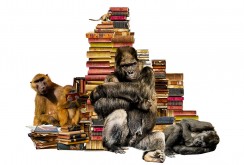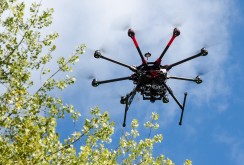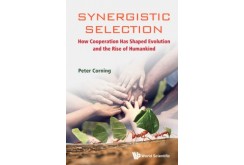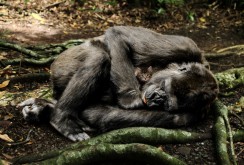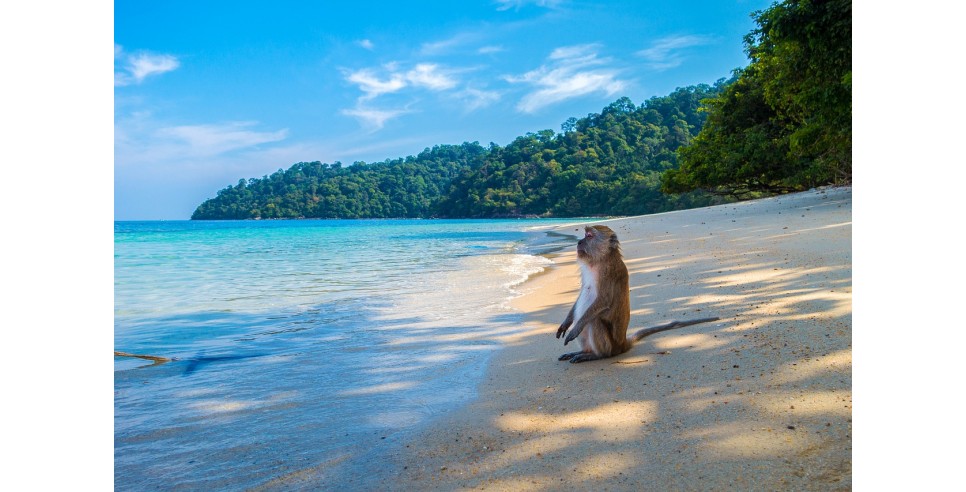
Between the growing environmental crisis, extreme economic inequality and global poverty, a long list of social needs that are unfunded, or underfunded, and, not least, the dysfunctional or corrupt political regimes in many countries, our species is in genuine peril. And it’s entirely a self-made crisis. Yet this is precisely why there is reason for hope.
Let’s begin at the beginning, perhaps 5-7 million years ago, when our earliest ape-like ancestors descended from the trees in East Africa and made the difficult and dangerous transition to living on the ground. As I show in my new book, Synergistic Selection: How Cooperation Has Shaped Evolution and the Rise of Humankind, there were three keys to our remote ancestors’ ultimate success: close cooperation, innovation, and synergy. In a very real sense, our species invented itself.
The earliest of our direct ancestors, the australopithecines, were small (about 3 feet tall) and slow-moving. They could not have survived the harsh physical challenges of living on the ground nor held their own against the many large predators in their environment – like the pack-hunting Palhyaena – without foraging together in cooperative groups and defending themselves collectively with the tools they invented for procuring food, and for self-defense (probably digging sticks that doubled as clubs, and perhaps thrown rocks). The result was a game-changing synergy – cooperative outcomes that could not otherwise have been achieved. (Synergy refers to the combined effects created by two or more parts, or individuals. The classic example is water, the joint product of two gases, hydrogen and oxygen.)
The rest of our multi-million-year evolution story has followed this same script. Cooperation and innovation have been the underlying themes, and the synergies that result (the “economic” benefits) are the reason why we cooperate. Thus, the emergence of the much larger, and bigger-brained Homo erectus, some 2 million years ago, was the product of a synergistic joint venture, namely, the hunting of big game animals in closely cooperating groups with the aid of an array of new tools – finely balanced throwing spears, hand axes, cutting tools, carriers, and (eventually) fire and cooking. Not to mention (most likely) sequestered home bases, midwifery, and the first baby-sitting cooperatives. It was, in effect, a “collective survival enterprise,” and it was sustained by multiple synergies.
The final emergence of modern humankind, perhaps 300,000 years ago, represented a further elaboration of this collective survival strategy, with synergies that continued to multiply. The cooperating groups were now much larger – each one was, in effect, a coalition of families -- and they were supported by a sophisticated array of new technologies – shelters, clothing, food processing, food preservation and storage techniques, and much more. Especially important were the more efficient hunting and gathering tools, like spear throwers (which greatly increased their range and accuracy), bows and arrows, nets, traps, and fishing techniques. And as the total number of human groups increased and they began to emigrate beyond their African heartland, they overwhelmed and displaced other hominin groups wherever they went and soon drove the local big game animals to extinction – hundreds of species all told. Our collective survival enterprise had now become a powerful engine of growth and innovation (and environmental disruption), as synergy begat more synergy. However, our expanding human population was also plagued by a pattern of tribal competition and warfare, and this too involved close social cooperation and synergistic new war-making technologies.
Now, in the 21st century, the human species has expanded into a world-wide population of some 7.5 billion people, most of them living in dense super-tribes supported by mind-boggling technologies and doomsday weapons. Meanwhile, the collective survival enterprise has become an increasingly global effort. We are ever-more interdependent when it comes to meeting our basic survival and reproductive needs. And a key part of this survival strategy is an enormously complex division of labor (or what I prefer to call a “combination of labor”). It transcends our many cultural and political boundaries. The evolutionary biologists have a term for it. They call it a “superorganism.”
One obvious example of this emergent, global combination of labor is a modern airliner -- an immensely complicated synergistic effect. The workhorse Boeing 737, for example, requires some 158,000 workers and 367,000 parts – from engines to exit signs – that are provided by hundreds of suppliers from all over the world. And this says nothing about the airline companies in various countries that purchase and operate these aircraft, or the global petroleum industry that provides the fuel. Or the agricultural systems that feed the workers. Or the governments that provide law and order, along with a dense network of regulations, direct subsidies, infrastructure, educational systems, public health, health care systems, social safety nets, and much more.
We are, in fact, totally dependent on a vast, world-wide cooperative system that produces an immeasurable number of synergies that benefit all of us in various ways. We are totally dependent on this collective survival enterprise, and the libertarian ideal of “freedom” represents the dividends – the degree of autonomy, opportunity, and limited government that are possible only when our ongoing survival and reproductive needs are satisfied. For every modern, complex society remains tethered to our “prime directive.” We are the latest iteration of a 5-7 million-year-old survival strategy that we inherited from untold previous generations.
It is this fundamental biological reality that must guide how we respond to our growing global crisis. We are at a tipping point as a species, but it is a crisis of our own making and, fortunately, we also have options for how to deal with it. If we follow the proven pathway of innovation, cooperation and producing new synergies, there is every reason to hope that we can make the necessary changes and create a sustainable global society for the long term.
But all this will require a new level of social cooperation that transcends by far what we have already achieved as a species. And this, in turn, will depend on fairness – social justice. There has never been sustained cooperation in human evolution without it. As I discuss in my book, there are, in fact, three distinct fairness principles that play a vitally important role in all of our social relationships, and they will be essential if we hope to enlist broad cooperation going forward. They represent the “goal posts,” so to speak, for achieving a fair society. These principles are (1) equality with respect to providing for our basic survival needs; (2) equity with respect to “merit”; and (3) reciprocity, or giving back for the benefits we receive from others and society. As I explain in my book, these three fairness principles – equality, equity and reciprocity -- must be bundled together and balanced in order to achieve a stable and relatively harmonious social order. It could be likened to a three-legged-stool; all three legs are equally important. Together they form the framework for what could be called a “biosocial contract,” and they point to broad range of necessary but achievable political/policy changes (some of which I have detailed elsewhere).
One of the most distinguished political commentators of the 20th century, Walter Lippmann, expressed his deep concern about the challenges we confront as a species in a 1969 interview shortly before he died: “Never before have the stakes been so high,” he noted. “The supreme question before mankind – to which I shall not live to know the answer – is how men will be able to make themselves willing and able to save themselves.” Almost a half century later, we still do not know the answer to Lippmann’s “supreme question.” But we do know which path we must follow. Now we must find the collective will to choose this path.










